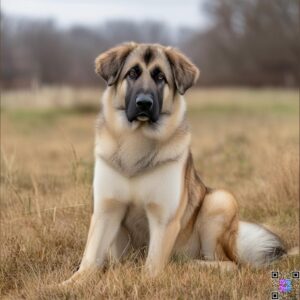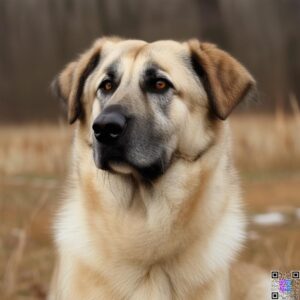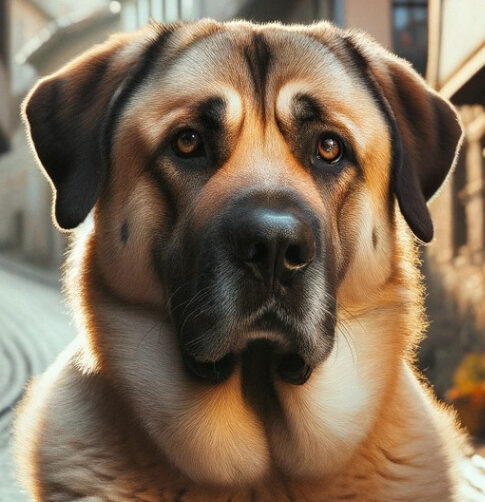Introduction
The Wolf Sable Anatolian Shepherd is a remarkable breed that captivates dog lovers with its striking appearance and impressive guarding abilities. Known for its loyalty and protective nature, this breed has a rich history rooted in Turkey, where it has served as a guardian of livestock for centuries. In this article, we will delve into the unique characteristics, care requirements, and training needs of the Wolf Sable Anatolian Shepherd, providing you with a comprehensive understanding of this majestic breed.
Understanding the Wolf Sable Anatolian Shepherd

The Wolf Sable Anatolian Shepherd is a variation of the Anatolian Shepherd breed, distinguished by its unique coat color and pattern. This breed is characterized by its large size, strong build, and a coat that can range from fawn to wolf sable, often with a black mask. The wolf sable coloration gives these dogs a striking resemblance to their wild ancestors, enhancing their majestic appearance. Historically, the Anatolian Shepherd has been bred for its ability to protect livestock from predators such as wolves and bears. This breed’s origins can be traced back thousands of years, making it one of the oldest livestock guardian breeds in existence. The Wolf Sable Anatolian Shepherd shares many traits with its close relative, the Kangal Shepherd, but there are notable differences in size, temperament, and appearance.
What is the Wolf Sable Anatolian Shepherd?
The Wolf Sable Anatolian Shepherd is a variant of the Anatolian Shepherd breed, which originated in Turkey. This breed was traditionally used for guarding livestock against predators. The term “Wolf Sable” refers to the unique coloration of their coat, which resembles that of a wolf. These dogs are known for their loyalty to their families and their strong protective instincts.Anatolian Shepherds are large dogs, often weighing between 90 to 150 pounds. They have a well-muscled body that reflects their working heritage. Their coat can vary from short to medium length but is typically dense and weather-resistant. The Wolf Sable coloration features shades of gray, brown, and black that create a striking appearance.
Physical Appearance
The Wolf Sable Anatolian Shepherd is an impressive sight, standing tall and proud. Males typically weigh between 90 to 150 pounds, while females range from 80 to 120 pounds. Their height can vary, with males reaching up to 34 inches at the shoulder and females around 32 inches. This breed’s robust build is complemented by a thick, double coat that provides insulation against harsh weather conditions. The wolf sable coloration is particularly striking, with shades that can range from a light fawn to a deep sable, often accompanied by a distinctive black mask. This unique coloring not only enhances the dog’s beauty but also serves a practical purpose, allowing them to blend into their surroundings while guarding livestock.
Temperament and Behavior
The temperament of the Wolf Sable Anatolian Shepherd is a blend of loyalty, intelligence, and independence. These dogs are known for their strong protective instincts, making them excellent guardians for families and livestock alike. They are typically calm and confident, but can also be reserved around strangers, showcasing their natural guarding abilities.Socialization is crucial for this breed, as it helps them become well-adjusted companions. Early exposure to various environments, people, and other animals will ensure that they develop a balanced temperament. Despite their independent nature, Wolf Sable Anatolian Shepherds are known to form strong bonds with their families, often displaying affection and loyalty.
Training the Wolf Sable Anatolian Shepherd
Training a Wolf Sable Anatolian Shepherd requires patience, consistency, and positive reinforcement. Basic obedience training should begin early, focusing on commands such as sit, stay, and come. These dogs are intelligent and eager to please, making them receptive to training when approached correctly. As they mature, advanced training can include activities such as agility, herding, or protection work. Engaging their minds and bodies is essential, as these dogs thrive on physical and mental stimulation. Regular training sessions not only strengthen the bond between the dog and its owner but also help channel their natural instincts in a positive direction.
Basic Training Techniques
Training a Wolf Sable Anatolian Shepherd requires patience and consistency. Basic commands such as sit, stay, come, and heel should be taught early on using positive reinforcement techniques like treats or praise.
Advanced Training Considerations
As these dogs grow older, advanced training becomes essential due to their independent nature. They thrive on challenges; therefore, incorporating obedience training alongside activities like agility or herding can keep them engaged.
Health and Care
Like all breeds, the Wolf Sable Anatolian Shepherd is susceptible to certain health issues. Common concerns include hip dysplasia, elbow dysplasia, and certain genetic conditions. Regular veterinary check-ups, a balanced diet, and appropriate exercise can help maintain their health and well-being. Grooming needs for this breed are moderate. Their double coat requires regular brushing to minimize shedding and prevent matting. During shedding seasons, more frequent grooming may be necessary to keep their coat in optimal condition. Additionally, regular dental care and nail trimming are essential components of their overall health routine.
Common Health Issues
Like all breeds, the Wolf Sable Anatolian Shepherd can be prone to certain health issues. Common concerns include hip dysplasia, elbow dysplasia, and certain eye conditions. Regular veterinary check-ups can help catch these issues early.
Nutrition and Diet
A balanced diet is essential for maintaining the health of these large dogs. High-quality dog food formulated for large breeds should be provided to ensure they receive adequate nutrition without excessive calories that could lead to obesity.
Exercise Needs
These dogs require regular exercise to stay healthy both physically and mentally. Daily walks combined with playtime in a secure area can help meet their exercise needs. Engaging them in activities like agility training or herding can also provide mental stimulation.
Living with a Wolf Sable Anatolian Shepherd
The Wolf Sable Anatolian Shepherd thrives in environments where they can exercise and roam freely. While they can adapt to various living situations, they do best in homes with ample outdoor space. Their exercise needs are significant; daily walks, playtime, and mental stimulation are crucial to keeping them happy and healthy. These dogs are known for their loyalty and protective nature, making them excellent family companions. However, potential owners should be prepared for their independent streak and ensure they receive proper training and socialization from an early age.
The Role of the Anatolian Shepherd in Livestock Protection
Historically, the Anatolian Shepherd has played a vital role in protecting livestock from predators. Farmers and shepherds in Turkey have relied on these dogs for centuries, trusting them to safeguard their herds against threats. The breed’s natural instincts and protective nature make them invaluable assets in rural settings. In modern times, the Wolf Sable Anatolian Shepherd continues to serve as a guardian for livestock, showcasing its adaptability and versatility. Their strong instincts and loyalty make them suitable for various roles, from family pets to working dogs on farms.

FAQs
1- What is the lifespan of a Wolf Sable Anatolian Shepherd?
The average lifespan of a Wolf Sable Anatolian Shepherd ranges from 10 to 15 years, depending on genetics, care, and overall health.
2- Are Wolf Sable Anatolian Shepherds good family pets?
Yes, they can be excellent family pets, known for their loyalty and protective nature. Early socialization and training are essential for a well-adjusted companion.
3- How much exercise does a Wolf Sable Anatolian Shepherd need?
These dogs require a significant amount of exercise, including daily walks, playtime, and mental stimulation to keep them happy and healthy.
4- What is the best diet for a Wolf Sable Anatolian Shepherd?
A balanced diet rich in high-quality protein, healthy fats, and essential vitamins is ideal. Consult a veterinarian for specific dietary recommendations based on age and activity level.
5- How do you train a Wolf Sable Anatolian Shepherd?
Training should begin early, focusing on basic obedience commands and gradually progressing to advanced training. Positive reinforcement and consistency are key.
6- What are the grooming needs of a Wolf Sable Anatolian Shepherd?
Grooming needs are moderate, requiring regular brushing to manage shedding and maintain coat health. Additional grooming may be necessary during shedding seasons.
Conclusion
The Wolf Sable Anatolian Shepherd is a remarkable breed that embodies strength, loyalty, and protective instincts. With a rich history rooted in livestock guarding, this breed continues to thrive as both a guardian and a beloved family companion. Understanding their unique characteristics, care requirements, and training needs is essential for anyone considering welcoming a Wolf Sable Anatolian Shepherd into their home. With the right environment and commitment, these dogs can bring joy and security to their families for many years.
